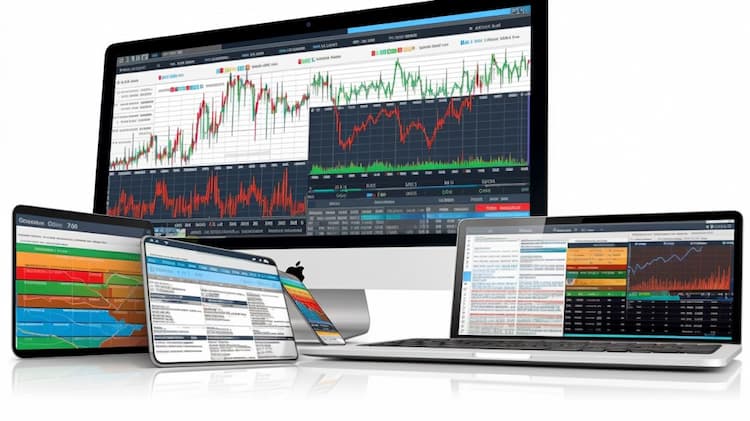
What are the best Cybersecurity ETFs to invest in the United States?
Discover the top Cybersecurity ETFs available for investment in the United States, offering an opportunity to capitalize on the growing demand for robust cybersecurity solutions. This article explores a range of carefully selected ETFs that provide exposure to leading companies in the cybersecurity sector, helping investors navigate the dynamic landscape of digital security and potentially achieve long-term growth and stability.
Cybersecurity ETFs: Understanding the Importance of Cybersecurity
Cybersecurity has become a critical concern in today's digital age. With the increasing frequency and sophistication of cyber threats, companies and individuals alike are seeking ways to protect their sensitive information and digital assets. One effective way to invest in the cybersecurity sector is through exchange-traded funds (ETFs), which offer investors exposure to a diversified portfolio of cybersecurity stocks. These ETFs provide an opportunity to capitalize on the growth potential of the cybersecurity industry while spreading investment risk across multiple companies.
One notable cybersecurity ETF is the First Trust Nasdaq Cybersecurity ETF (CIBR). CIBR seeks to track the performance of the Nasdaq CTA Cybersecurity Index, which includes companies engaged in the cybersecurity sector. The fund holds a diverse range of stocks, including companies involved in network security, data protection, and threat detection. By investing in CIBR, investors can gain exposure to leading cybersecurity companies and potentially benefit from the industry's growth.
Cybersecurity ETFs: Comparing CIBR with Similar ETFs
When considering investing in a cybersecurity ETF, it's important to compare different options to make an informed decision. One ETF that stands out in comparison to CIBR is the ETFMG Prime Cyber Security ETF (HACK). HACK aims to provide investment results that correspond to the performance of the Prime Cyber Defense Index, which includes global companies involved in the cybersecurity industry.
While both CIBR and HACK focus on the cybersecurity sector, there are some differences between the two. CIBR has a broader scope, including both U.S. and international companies, while HACK focuses primarily on U.S.-based companies. Additionally, the underlying indices of CIBR and HACK may have varying methodologies for selecting and weighting constituent stocks. Investors should carefully analyze these differences and consider their investment objectives and risk tolerance before choosing the most suitable option.
 CIBR overlap What are the best Cybersecurity ETFs to invest in the United States?
CIBR overlap What are the best Cybersecurity ETFs to invest in the United States?
Cybersecurity ETFs: Exploring Investment Strategies for Cybersecurity ETFs
Investors looking to incorporate cybersecurity ETFs into their portfolio can consider different investment strategies. One approach is to invest in a single cybersecurity ETF, such as CIBR or HACK, to gain exposure to the overall cybersecurity sector. This strategy allows for diversification within the sector without the need to select individual stocks.
Alternatively, investors may opt for a combination of multiple cybersecurity ETFs. By selecting complementary ETFs with different holdings and approaches, investors can further diversify their exposure and potentially capture a broader range of opportunities within the cybersecurity sector. However, it's crucial to conduct thorough research and due diligence to ensure that the selected ETFs align with the desired investment strategy and risk profile.
Cybersecurity ETFs: Evaluating Risk and Potential Returns
As with any investment, it's important to evaluate the risks and potential returns associated with cybersecurity ETFs. While the cybersecurity industry offers growth potential, it is also subject to various risks. These include technological advancements that may render existing cybersecurity measures less effective, regulatory changes that could impact the sector, and evolving threats that require constant innovation from cybersecurity companies.
Investors should carefully assess the track record and performance of the ETFs under consideration. Historical returns, expense ratios, and holdings are all important factors to consider. Additionally, understanding the investment strategy and methodology of each ETF can provide insights into how the fund is managed and the level of risk it may be exposed to.
Conclusion
In today's digital world, cybersecurity has become increasingly vital, making cybersecurity ETFs an attractive investment option for those seeking exposure to this growing sector. ETFs like the First Trust Nasdaq Cybersecurity ETF (CIBR) and ETFMG Prime Cyber Security ETF (HACK) offer investors the opportunity to gain diversified exposure to leading cybersecurity companies. However, it is crucial to carefully assess the investment objectives, risk tolerance, and comparative features of different ETFs before making investment decisions.
Disclaimer: This article is for informational purposes only and is not providing any investment advisory services.
Sources:
CIBR ETF issuer
CIBR ETF official page
FAQ
What are Cybersecurity ETFs?
Cybersecurity ETFs are exchange-traded funds that invest in companies involved in the cybersecurity industry. These companies provide products and services to protect against cyber threats, such as data breaches, hacking, and other forms of cyber attacks.
What factors should I consider when selecting Cybersecurity ETFs?
When selecting Cybersecurity ETFs, you may consider factors such as the fund's expense ratio, assets under management (AUM), liquidity, the underlying index or methodology, diversification, the fund's track record, and the specific companies and subsectors included in the ETF.
Which ETFs are considered among the best Cybersecurity ETFs in the United States?
Some of the popular Cybersecurity ETFs in the United States include:
What are the advantages of investing in Cybersecurity ETFs?
Investing in Cybersecurity ETFs provides exposure to a growing industry driven by increasing cyber threats. It allows investors to gain diversification across multiple cybersecurity companies, mitigating the risk associated with investing in individual stocks. ETFs also provide ease of access, liquidity, and transparency.
Are there any risks associated with investing in Cybersecurity ETFs?
Like any investment, Cybersecurity ETFs come with risks. Some of the risks include market volatility, potential industry-specific risks, such as regulatory changes or new technologies that could impact the sector, and individual company risks within the ETF. It's important to conduct thorough research and consider your risk tolerance before investing.





